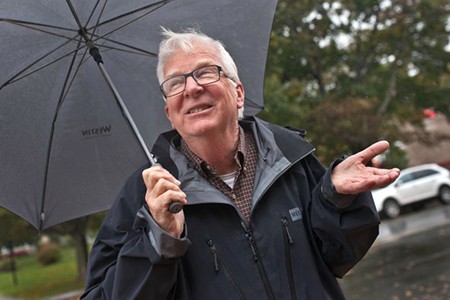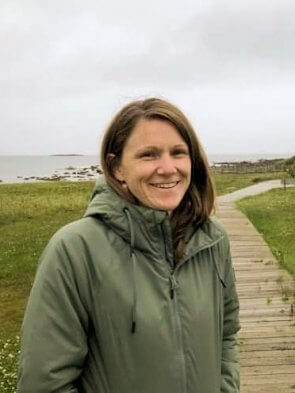Senior climatologist says this year has been a good example of what’s next as climate change continues.

Chantel Murrin
Kicker
Wild weather might seem like nothing out of the ordinary to most Newfoundlanders and Labradorians, but extreme weather can be a product of climate change.
David Phillips is senior climatologist for Environment and Climate Change Canada. He says there are no safe havens from this global issue.
“Every place has its own hazard, and the impacts are different,” said Phillips. “It’s not sort of a one prescription for everybody.”
Parts of Western Canada have been faced with many climate-related disasters such as forest fires, heat waves and droughts in the past six months.
While Newfoundland and Labrador hasn’t seen anything to that effect, the southwest coast experienced an unprecedented storm over the past two days. It broke a 24-hour rainfall record and left part of the province isolated due to highway washouts.
Phillips believes storm intensity and the rise in precipitation amounts are going to be the province’s downfall.
“One particular factor that would be your cross to bear in the future will be higher sea levels because those storms that can come off the Atlantic, they could be more powerful but certainly because of higher sea levels, there’s going to be more indentation, more erosion and there’s going to be less ice,” he said.

According to NASA’s climate change website, arctic sea ice melts at a rate of 13 per cent per decade and the last three decades have seen the oldest ice decline by 95 per cent.
Sea ice used to be a great dampener of wave heights and storms, says Phillips, and without it, storms are going to be mightier and more impactful.
Susan Higdon is the environmental education coordinator for the Conservation Corps Newfoundland and Labrador, a non-profit organization that provides youth with job opportunities surrounding environmental conservation.
She says with all the homes and infrastructure built near coastlines, people need to start thinking about how to adapt to the changes they’ll see in the future.
“It’s definitely an area of concern for people in the province and our youth are the people who are inheriting these issues so they’re who we need to talk to,” said Higdon.
Phillips says the atmospheric rivers that are affecting British Columbia and Atlantic Canada can’t be stopped, but disasters can be avoided.
Atmospheric rivers are like rivers in the sky and can have a disastrous effect on life and property. They are streams of water vapours that can cause flooding and soil erosion as they dump their moisture on land masses leading to record rainfall amounts.
“You can’t run away from it,” said Phillips. “But by preparing your community, by responding earlier, and building better and stronger, you can prevent disaster from coming. You can’t prevent the event, but you can prevent the disaster by preparing your infrastructure.”
Roughly 85 per cent of the money spent on climate change in Canada is focused on cutting back on fossil fuels and only 15 per cent on preparing for it, says Phillips.
From the research she’s done, Higdon says preparation and mitigation in the province could be better.
In January 2020, St. John’s experienced a blizzard that brought the city to its knees and many residents were left trapped in their homes. The Canadian Armed Forces was mobilized to help with snow removal.
The Canadian Armed Forces were also sent to the province in September 2010 when Hurricane Igor caused major flooding and left thousands of people isolated.
Phillips says even Newfoundlanders and Labradorians, being the weather-hardy people that they are, can’t escape the inevitable.
“You may be weather veterans but you’re not immune from what nature has up its sleeves,” he said. “It’s going to affect you and in particular, I think sea levels.”




Be the first to comment